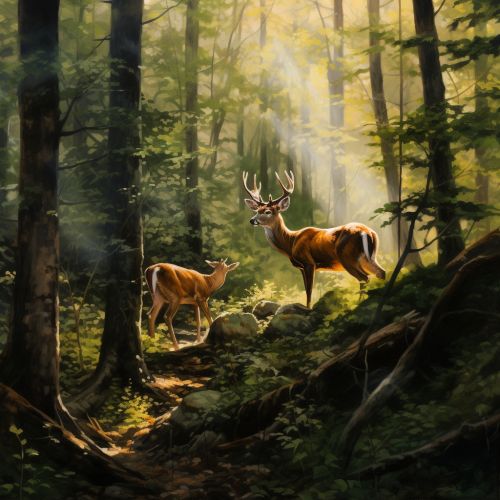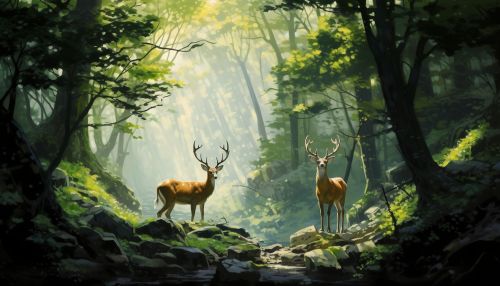Intraspecific competition
Introduction
Intraspecific competition is a fundamental concept in ecology, referring to the competition between members of the same species for limited resources. This form of competition can occur in virtually all types of organisms and ecosystems, and it plays a crucial role in shaping the dynamics of populations and communities.


Definition and Types
Intraspecific competition is defined as the competition between individuals of the same species for the same resources. These resources can include food, water, space, light, and mates. There are two main types of intraspecific competition: scramble and contest.
Scramble competition occurs when all individuals have equal access to resources, but the resources are not sufficient to support the entire population. This often leads to a rapid depletion of resources, and the individuals that are unable to secure enough resources may not survive or reproduce.
Contest competition is characterized by direct interactions between individuals, where some individuals secure a disproportionate share of the resources. This often involves aggressive behavior and physical contests, and the winners of these contests are able to survive and reproduce at a higher rate.
Mechanisms and Effects
Intraspecific competition can occur through various mechanisms, including interference and exploitation. Interference competition involves direct interactions that prevent rivals from accessing resources, while exploitation competition occurs when individuals deplete a shared resource without directly interacting with each other.
The effects of intraspecific competition can be profound, influencing the population dynamics, community structure, and evolution of species. It can lead to a decrease in population size, changes in the distribution of individuals, and shifts in the age and size structure of the population. It can also drive the evolution of traits that enhance an individual's competitive ability, such as larger body size or more aggressive behavior.
Role in Population Dynamics
Intraspecific competition plays a key role in regulating population size and growth. According to the logistic growth model, a population's growth rate decreases as its size approaches the carrying capacity of the environment, due to increasing intraspecific competition for limited resources. This can result in a stable population size, where the birth rate equals the death rate.
In addition, intraspecific competition can influence the spatial distribution of individuals within a population. In the absence of competition, individuals may be randomly distributed. However, competition can lead to a more uniform distribution, as individuals space themselves out to reduce competition for resources.
Role in Evolution and Adaptation
Intraspecific competition can also drive the evolution of species, by favoring traits that enhance an individual's ability to compete for resources. This process, known as natural selection, can lead to the evolution of a wide range of competitive traits, from physical characteristics like body size or strength, to behavioral traits like aggression or territoriality.
In addition, intraspecific competition can promote the evolution of phenotypic plasticity, the ability of an organism to change its phenotype in response to changes in the environment. This can allow individuals to adjust their behavior or physiology to reduce competition, such as changing their feeding habits or activity patterns.
Examples in Nature
Intraspecific competition is widespread in nature, occurring in a wide range of organisms and ecosystems. For example, in many plant species, competition for light can lead to changes in growth form, such as increased height or branching. In animal species, competition for mates can lead to the evolution of elaborate courtship displays or aggressive behavior.
One well-studied example of intraspecific competition is in red deer populations. Males compete intensely for access to females during the breeding season, often engaging in physical contests that can result in injury or death. This competition has led to the evolution of large antlers and body size in males, traits that enhance their competitive ability.
Conclusion
Intraspecific competition is a fundamental process in ecology, shaping the dynamics of populations and communities, and driving the evolution of species. By understanding this process, ecologists can gain insights into the mechanisms that regulate biodiversity and the functioning of ecosystems.
